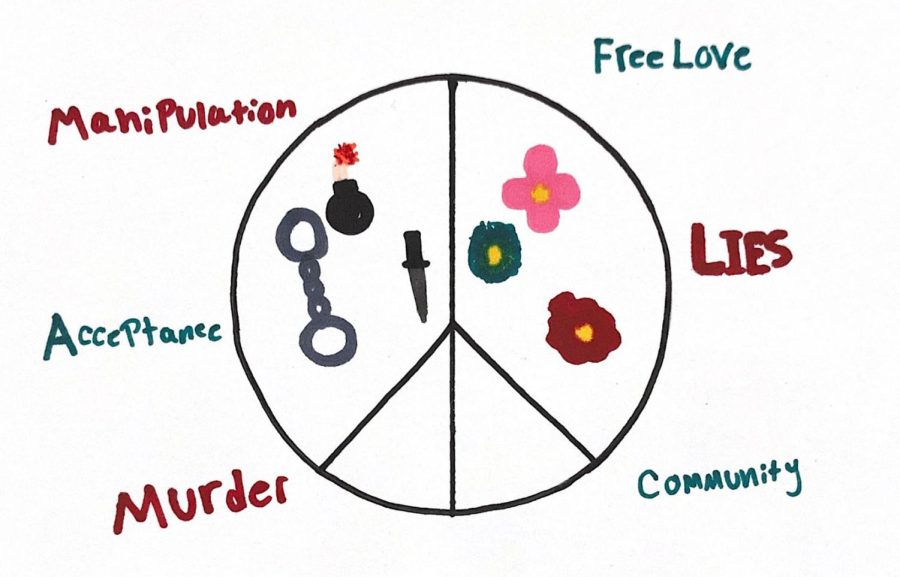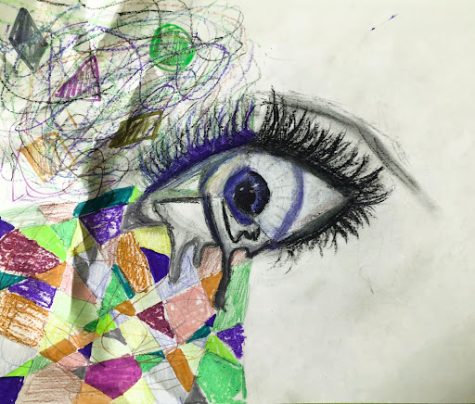Searching for a place to belong: The Psychology of Cults
A chart meant to display irony between the free loving attitude of cults that later turned deadly
May 17, 2022
Cults are defined by dictionary.com as “a system of religious veneration and devotion directed toward a particular figure or object,” seemingly with no inherent negative connotations attached. Although when we hear the word “cult” we immediately think of the Manson Family or the Jones Town massacre.
What makes a cult is really up to debate, but tell all signs are usually seen as a group with a charismatic leader who continuously becomes the cults object of worship (Even rivaling the original object of the member’s worship such as a deity or idea), a process of indoctrination also called brainwashing, and exploitation of the group’s members such as through economic or sexual means.
The end goal of the group is the defining aspect in determining what type of cult the group is. There are several subcategories the most common are Destructive cults, Doomsday cults, Political cults, and Polygamist cults, Racist Cults, and Terrorist Cults. The objectives of these subtypes are pretty obvious, Doomsday cults, such as Heavens Gate, await the end of the world and destructive cults like Branch Davidians have some sort of violence as their mission.
Cult leaders can range in race, gender, and background, but things they all seem to have in common is a charismatic nature that allows the members of the group to feel loved and accepted, cult leaders are also often the subject of romantic or sexual attraction on the part of some members because of their ability to make an individual feel special and desired.
In the United States and even worldwide, a large number of groups that could be considered cults arose in the 60s and 70s due to the new ideas and beliefs that started to arise during this time. People flocked to new ideas in hope that they might find a place to belong. At first, some of these groups seemed almost utopian, a place where people could find a family.
The group Rajneeshpuram (raaj·neesh·poo·ruhm) was at first a seemingly perfect society where people created a culture far ahead of its time. They celebrated environmentalism, free love, and the blending of Eastern and Western cultures. But in the end, the group turned violent; their leader showed his true colors at the end.
Though cults range in severity and the level of danger, there are a few tell-all signs that a person you know might be in a cult.
If someone you know is involved in a group and they are displaying an obsession of sorts over the group’s leader, by either relying on them for validation or for general confirmation of thoughts and opinions, or they even worship the leader and speak about them as if they were inherently better than anyone else. Another sign is that the person is devoting themselves entirely to the group and ignoring friends, family, work, or school, cutting them off from the support systems that could help them realize the direness of the situation they are in. Last, and the most important sign, is a person believing that there is no legitimate reason to leave the group and that all former members who have left were wrong, coerced into leaving, or evil. If a person is convinced that the only people to leave the situation they are in were bad, then they automatically assume they are doing good just by being there, forcing their doubts to leave them.








